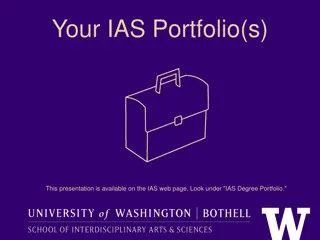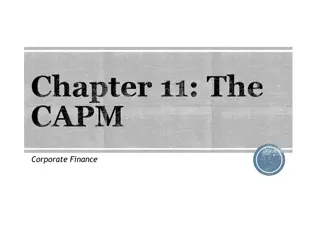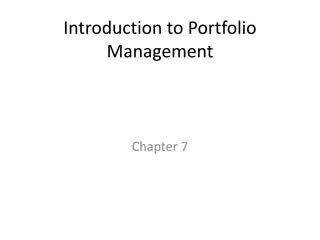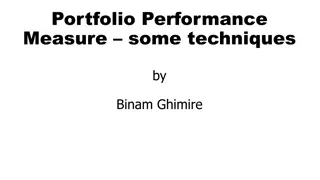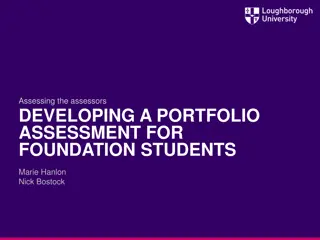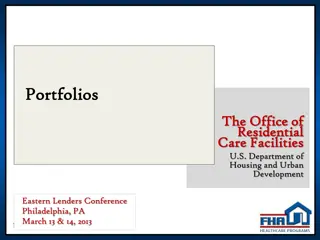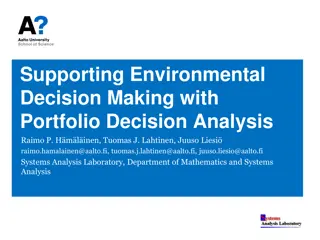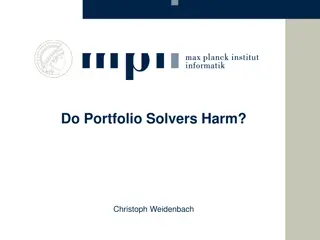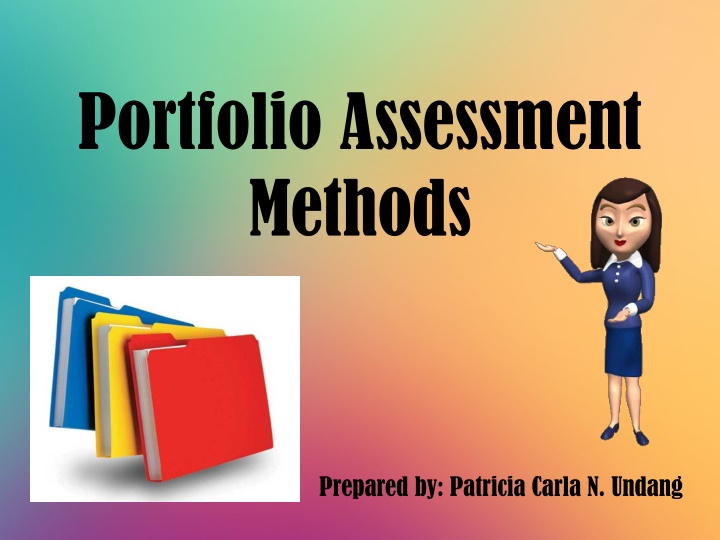
Effective Portfolio Assessment Methods for Student Progress
Explore the principles, purposes, and benefits of portfolio assessment in education. Learn how portfolios serve as authentic assessment tools, showcasing student growth and fostering self-reflection. Discover how portfolio assessment promotes individualized learning and enhances student awareness of their progress.
Download Presentation

Please find below an Image/Link to download the presentation.
The content on the website is provided AS IS for your information and personal use only. It may not be sold, licensed, or shared on other websites without obtaining consent from the author. If you encounter any issues during the download, it is possible that the publisher has removed the file from their server.
You are allowed to download the files provided on this website for personal or commercial use, subject to the condition that they are used lawfully. All files are the property of their respective owners.
The content on the website is provided AS IS for your information and personal use only. It may not be sold, licensed, or shared on other websites without obtaining consent from the author.
E N D
Presentation Transcript
Portfolio Assessment Methods Prepared by: Patricia Carla N. Undang
Portfolio - Is a purposeful collection of student work that exhibits the student s efforts, progress and achievements in one or more areas. The collection must include the student participation in selecting contents, the criteria for selection, the criteria for judging merit and evidence of student self-reflection.
Portfolio Assessment - Is one of the several authentic and non-traditional assessment techniques in education.
1. Principles of Portfolio Assessment a. A portfolio is a form of assessment that students do together teachers. b. A portfolio represents a selection of what the students believe are best included from among the possible collection of things related to the concept being studied. with their
c. A portfolio provides samples of the student s work which show growth over time. d. The criteria for selecting and assessing the portfolio contents must be clear to the teacher and the students at the outset of the process.
2. Purposes of Portfolio Assessment 1. Portfolio assessment to teaching. assessment matches 2. Portfolio assessment has clear goals. In fact, they are decided on at the beginning of instruction and are clear to teacher and students alike.
3. Portfolio assessment gives a profile of learner s abilities in terms of depth, breadth, and growth. 4. Portfolio assessment is a tool for assessing a variety normally testable in a single setting for traditional testing. of skills not
5. Portfolio assessment develops awareness of learning. students own 6. Portfolio assessment caters to individuals in a heterogeneous class.
7. Portfolio assessment develops social skills. Students interact with other students in the development of their own portfolio. 8. Portfolio assessment develops independent and active learners.
9. improve motivation for learning and thus achievement. Portfolio assessment can 10. Portfolio assessment provides opportunity for student-teacher dialogue.
Thank you for listening!



